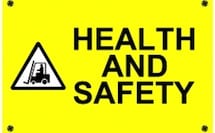When you’re working on a construction site protecting your eyes and ears at work is very important, it is vital that you use the right protective equipment for the task you’re carrying out. Two parts of your body that can be permanently damaged by failing to do so are your eyes and ears. Damage may occur over a prolonged period or through one incident, so it’s important to understand exactly what equipment you should be using and when.
Protecting your eyes
Damage to your eyesight can occur because of a number of factors: debris and dust, chemicals and lasers are just some of the potential risks faced by construction workers. It is therefore crucial that you select and wear the appropriate protective equipment whenever you’re carrying out potentially hazardous activities. Tasks for which you should be wearing protective eyewear include:
- Situations in which you might be splashed by chemicals or other hazardous materials
- The use of power tools, since debris could fly into your eyes
- Welding jobs
- Any work that involves lasers
- The use of gas or pressurised materials
There is a range of eye protection available. Which type you require will depend upon the area in which you are working and the materials involved. Safety glasses and goggles are available with or without side protection or you may be required to wear a full face or eye shield. Before starting the task, ensure that your protective equipment is in good condition and that there is no damage that could compromise its effectiveness.
If an accident does occur and a hazardous liquid gets into your eye, you must ensure that it is washed out straight away. It’s best to keep your eye open and use a sterile solution. However, if this isn’t possible, clean water should be used.
Protecting your ears
In addition to protecting your eyes from damage, you must look after your ears. Damage to hearing can occur as a result of prolonged exposure to high noise levels, leaving you with partial or even total loss of hearing. Employers should concentrate on limiting the noise levels to which their workers are exposed. However, if noise levels remain excessive, you must wear the appropriate protective equipment.
If the level of noise is above the lower limits, but you’re not within a compulsory area, you can still ask your employer for additional ear protection. Employers are responsible for providing you with the right protection and ensuring that you wear it in areas where noise levels are over the prescribed limits.
Ear protection includes ear muffs and ear plugs. Ear muffs provide better protection for extremely noisy environments and also offer defence against dust and debris entering the ear. The protection you wear should limit the noise levels to less than 85dB and be suitable for the work you’re undertaking. Ensure that they are regularly checked for any signs of damage and that they are well maintained.
By wearing the correct ear and eye protection you can reduce the risk of damage occurring. Failure to do so could have a permanent impact on your quality of life, perhaps impairing your ability to work.
Read more CSCS materiel on revision on this site by visiting this link. We hope you find this site helpful and we would love to hear any feedback you have.






very good info thanks